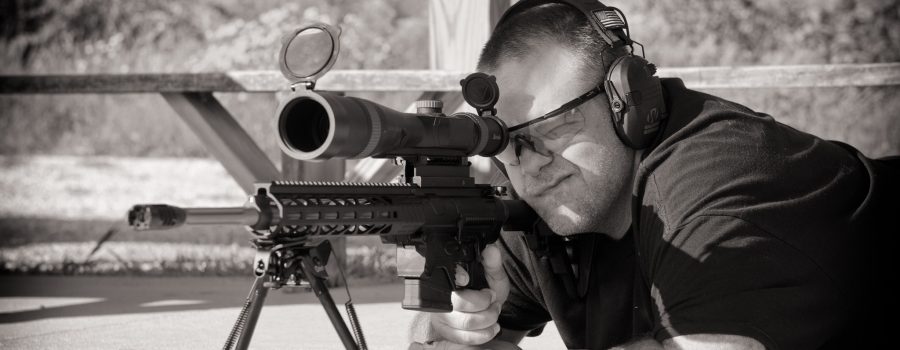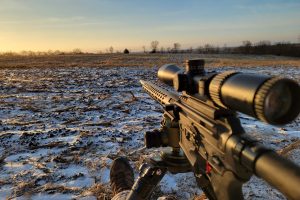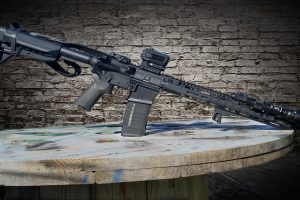- No common Technical Data Package (TDP)
- Platforms and proprietary components
- Manufacturing differences within the same platform
- Tolerance differences between manufacturers within the same platform
These are a few of the most common adversities that create fitment and operational concerns within the large frame ARs, and is why that BRD Gun Works does not offer upper receiver groups for the large frame guns. Large frame ARs also come into the shop for more service concerns than the AR-15.
Currently the only TDP that I’m aware of is the one owned by Knight’s Armament, as they have military contracts for their SR25. The TDP is proprietary to Knight’s Armament, unlike the AR-15 in which the TDP is platform wide. Without a platform wide TDP, this means that there are no set specifications to which components are to be made to, which results in no platform wide compatibility.
The designation of AR-10 for large frame ARs is technically incorrect. The AR-10 is a specific platform within the large frame guns and stands for Armalite Rifle 10. In the large frame ARs we have two main platforms, DPMS and AR-10. The rest of the large frame guns are comprised mainly of proprietary designs specific to the manufacturer that makes it.
The most common platform is DPMS. Within the DPMS platform we have sub-platforms:
- DPMS Gen 1- with two possible rail height specifications
- High rail- .210″
- Low rail- .150″
- DPMS Gen 2
Also within the DPMS platform you may find that while the receivers are of the DPMS design, that a manufacturer may use proprietary components in the receivers. An example of this are the pivot and take-down pins on the Aero Precision M5 lower receiver. The pins required for Aero’s M5 receivers are longer than the DPMS pattern pins. Recently, there was a large frame AR in the shop for service. While it was a DPMS Gen 1 pattern it had proprietary parts in the lower receiver. The thread portion of the mag catch was longer and the bolt catch detent was also substantially longer due to the depth of the detent hole.
The DPMS Gen 1 guns are full size AR platform receivers. What is commonly thought of when we think of large frame AR’s. But as previously mentioned, there are two different specifications for the upper receivers as well as the handguards. There is the “high rail” option that has an upper receiver tang height of .210”ish, while the “low rail” option is .150”ish. The high rail option is the most commonly seen rail height in the DPMS platform.

The Gen 2 DPMS AR’s utilize a shortened receiver set which makes the overall size very similar to the AR-15. This creates a lighter and more compact AR that can still fire the long action cartridges. While it uses the same magazines as the Gen 1’s; the receiver internals, rail, and barrel are specific to the Gen 2. Image below is of a Gen 2 receiver set.

A note of caution with the DPMS platform. Machining tolerances and specs can and typically will vary between manufacturers. It is not uncommon to have large frame guns come in with receivers that don’t fit properly. To have bolt carrier groups that will not properly cycle or will not lock back on an empty mag. Bolt catches with follower tangs that are not long enough to properly engage magazine followers.
The most incorrectly used designation….. AR-10. The Armalite AR-10 was designed by Eugene Stoner, and was the basis for the AR-15 design. It should be noted that the AR-10 is a distant 2nd to the DPMS as it relates to complete firearms and components. While the AR-10 is for the most part proprietary, it is considered to be a platform due to the availability of 3rd party aftermarket components and support. There is very little compatibility between the DPMS or AR-10 platforms. Basically none. Aside from the buffer system that can be used, there are is no other compatibility.
Magazine selection. This can be confusing for some.
- DPMS Gen 1 and Gen 2:
- SR25/ LR308 magazines
- Armalite AR-10:
- Original- SR25 pattern
- Approx. 1996 to 2011 AR-10B- AR10 mags: modified M14 magazines
- 2012 AR-10A- SR25 pattern
- Proprietary designs vary and can include:
- HK417
- FN FAL
- FN SCAR
- HK41/HK91/G3
- And a few others
So I should probably touch upon buffer systems. Over the years I’ve had a large number of large frame ARs come in with damage to the lower receiver due to excessive free-travel of the bolt carrier group. I’ve also seen guns with bolt carrier groups that wouldn’t fully cycle. Again, these concerns were attributed to home built guns that were not built with the proper components. Check out this video I made about 4 years ago on BCG free-travel.



There are three commonly seen large frame AR buffer systems:
- Rifle length receiver extension, rifle length buffer, and rifle length spring
- DPMS short .308 buffer, carbine receiver extension, specific 308 spring rate spring
- Armalite AR-10 system: Intermediate length tube, rifle spring, and carbine length buffer
Let’s look at some specific differences between the DPMS and AR-10.
The receivers are of a different shape. The DPMS upper receiver has a more rounded design at the rear of the upper receiver right before the buffer tube housing, while the AR-10 has more of an angular cut on the upper receiver.


Other differences:
- Barrel and bolt
- Headspace
- Bolt carrier group
- Armalite is specific
- DPMS Gen 1 is specific
- DPMS Gen 2 uses a shorter bolt carrier
- Some carriers use proprietary components such as POF and their roller design
- Rock River Arms bolt carrier is longer than DPMS and Armalite
- Other proprietary differences
- Buffer system as described above
- Gas tube
- DPMS tube is approximately 15.125”- rifle length gas
- AR-10 is approximately 15.5”- (+.325″ longer)
- Handguards as previously mentioned
- Barrel nut
- DPMS threads are 1-7/16” and 16 TPI- 2A
- AR-10 threads are 1-7/16” and 18 TPI-3A
- Magazine catch
I mentioned the differences of the DPMS and AR-10 gas tube above. I feel that it’s important to also mention that there are proprietary gas tube lengths within the DPMS platform. One such length is the “intermediate” length offered by Wilson Combat. At the time of this writing, within the last couple of years there have been other gas system lengths introduced into the AR-15 platform also. One such length is the “patrol” length used on some of Rosco Manufacturing K9 barrels. I mention this for the home builders. There have been large frame ARs come into the shop with functional concerns that were found to be caused by an incorrect gas tube length.
This is not meant to be an all-inclusive article, but rather to provide some insight to the complexity of the large frame ARs. It largely applies to those whom may be considering doing a home build, and is mainly to give a heads up. The majority of large frame ARs that come into the shop for functional concerns are home builds, and in my experiences the root failures were due component selection and assembly due to a lack of experience by the individual who put it together.
BRD Gun Works~ Performance on Demand



